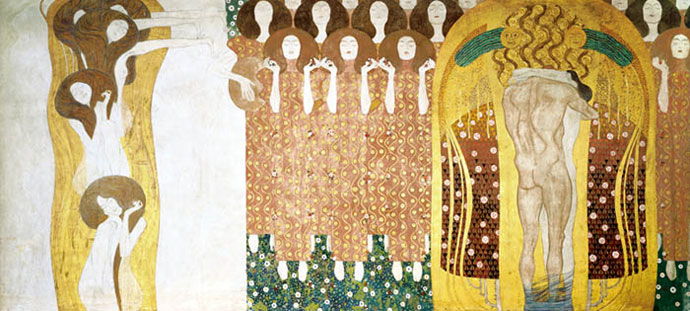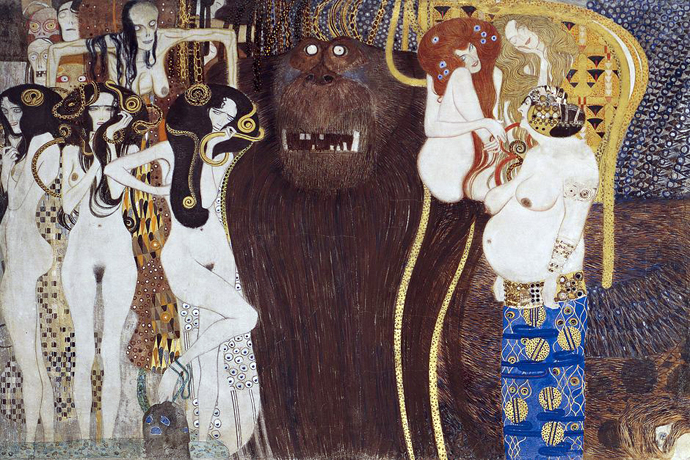
A Knight Takes Up The Fight For Joy
04.10.12
Padding empty streets in Chuck Taylors, brooding in darkened corners, scribbling away on well-leafed pages: we the artists, the writers, the musicians, and the thinkers perceived as ephemeral, erratic beings. Our path is not aimless. We are on the most valiant of journeys: the pursuit to find true joy for all humankind. Each day we take up arms like Templars seeking the Holy Grail because we know real happiness comes from the creation and enjoyment of Art.
I didn’t always feel this way. For many years, I forgot to be enlightened and emboldened by this mission.
I resigned from a “real” job to “foolishly” pursue the dream of becoming a writer after a lifetime lacking joy. Instantly discouraged in the wake of my decision, I questioned my ability to actually pursue my dream and began to drown in the despair of a lack of inspiration. In the aftermath of rash bravery, I sat on the floor of my living room hugging my knees, rocking back and forth whispering, “Not every idea I have is stupid, not every idea I have is stupid…” Then: the sounds of Symphony Number 9 in D minor Op. 125, the rug burn from the rocking on my IKEA rug, the realization that I was in the fourth and fifth part of Gustav Klimt’s Beethoven Frieze. I remembered how clearly Klimt outlines the journey the artist must take to find ultimate joy in his iconic painting. I knew what I needed to do. I turned the dial on my speakers to 11, and listened to Beethoven.
In 1902, the Secession Building in Vienna, Austria had its grandest exhibition, the XVI exhibition featuring a star-studded cast of 21 artists of different disciplines led by Joseph Hoffman. The focal point of the exhibition was Max Klinger’s Beethoven statue, but the piece remembered by so many as part of Viennese Art Nouveau is decidedly Gustav Klimt’s Beethoven Frieze. Klimt’s stand-out 2-D rendering of the human figure and unique use of ornament became a defining turning point in his career. But the story spans even further than the Wiener Workstatte mentality of these pioneering artists who created an amazing cross-disciplinary exhibit inspired by Beethoven. Beethoven was himself inspired by another artist through the words of the poem “Ode to Joy” by Friedrich von Schiller and vowed earlier in his career to one day set the poem to music. Later, Anthony Burgess uses Beethoven’s music in A Clockwork Orange, as does Stanley Kubric with the film adaptation. Humankind is deeply connected, simultaneously finding and creating inspiration with one another. Each artist works as part of an unending cycle that to others must seem ambling. A kinetically sustainable, self-sufficient machine.
i.
The frieze begins with the floating Genii, a yearning for happiness.
This is the artist in her nebulous stage, realizing the ache in her soul is leading her to seek artistic inspiration and pursuits. She may stage an impromptu art gallery featuring her poorly painted Van Gogh reproduction to show that she is indeed “on her way.”
ii.
Then, a suffering humanity pleads to the [artist-]knight, now charged to fight for happiness.
The artist hears the call to action and perhaps decides to get an MFA in some creative art or pays too much money for an online course and begins attending open mic nights or wandering around museums with a sketchbook.
iii.
The knight soon encounters the hostile forces of the giant Typheous and his daughters Sickness, Madness, and Death.
This is where the artist encounters the naysayers. The artist gets a “real” job. Her boss, Typheos, makes her doubt her pursuit of art. The artist becomes reclusive and thus sick, mad, and close to death.
iv.
As if Typheous, Sickness, Madness and Death weren’t enough, the knight comes across Lasciviousness, Wantonness, and Intemperance.
The artist says, “Screw this mission!” And begins to drink while letting the concerns of imminent poverty fly by. The artist gains weight with gluttony and then loses self-respect with lasciviousness.
v.
The knight then finds Poetry and appeasement is found there.
In a drunken stupor surrounded by bags of 100 calorie popcorn and empty tubs of ice cream, the artist hears a Bukowski reading. She finds appeasement.
vi.
The Arts lead humanity into the ideal realm. It is the only place to find joy.
The artist sobers up and then becomes drunk instead with art. Picking up an artistic medium, pen or instrument of choice, the artist initiates the divine act of creation. (Cue: Ode to Joy)
vii.
A choir of angels with beautiful afros assembles to sing the last movement of the 9th symphony
The artist blasts the 9th Symphony while writing an article with the vague and idealistic notion that it will one day be published. Neighbors are confused when they see the artist conducting an invisible symphony in front of the computer with the door wide open.
viii.
A couple embraces. The knight has at last found Joy through the arts.
The artist embraces the act of creation, so beautiful, and always so willing to please and forgets about the hostile naysayers, the idealistic notions of publication and simply creates in infinite bliss.
Upon entering the basement of the Secession building, a spiritual silence takes over. You stand next to others you may not know, whose language you may not speak, in a binding experience within whitewashed walls fringed with cement and gilded gold. The viewer is forced to submit to reverie. Out of nothingness, each patron begins to “hear,” Beethoven’s 9th Symphony. The four movements play in one’s mind out of memory, so clearly in tandem with each incredible image. Step by step, the viewer experiences the journey Klimt outlines high on the wall through expressive line.
Klimt originally intended the art to be ephemeral; it was supposed to be destroyed immediately after the exhibition. Luckily, the museum chose not to destroy the work and instead saved it for another Klimt exhibition, and for posterity. To this day, I can see each form and feel the pale flesh of floating Genii as if it were my own. I know now that there will be joy whether or not I am able to “become a writer,” because I can experience the arts and I can create.
__________
All About Beethoven. (2012, September 21). All About Beethoven. Retrieved September 21, 2012, from Beethoven 9th Symphony. The Ode to Joy. Beethoven Symphony 9. : http://www.all-about-beethoven.com/symphony9.html
Schwarzmayr, T. (2012, September 21). Synopsis. Retrieved September 21, 2012, from Secession, Association of Vienna Visual Artists, Vienna Secession: http://www.secession.at/beethovenfries/synopsis_e.html
Schwarzmayr, T. (2012, September 21). The Beethoven Exhibition 1902. Retrieved September 21, 2012, from Secession, Association of Vienna Visual Artists, Vienna Secession: http://www.secession.at/beethovenfries/1902_e.html

